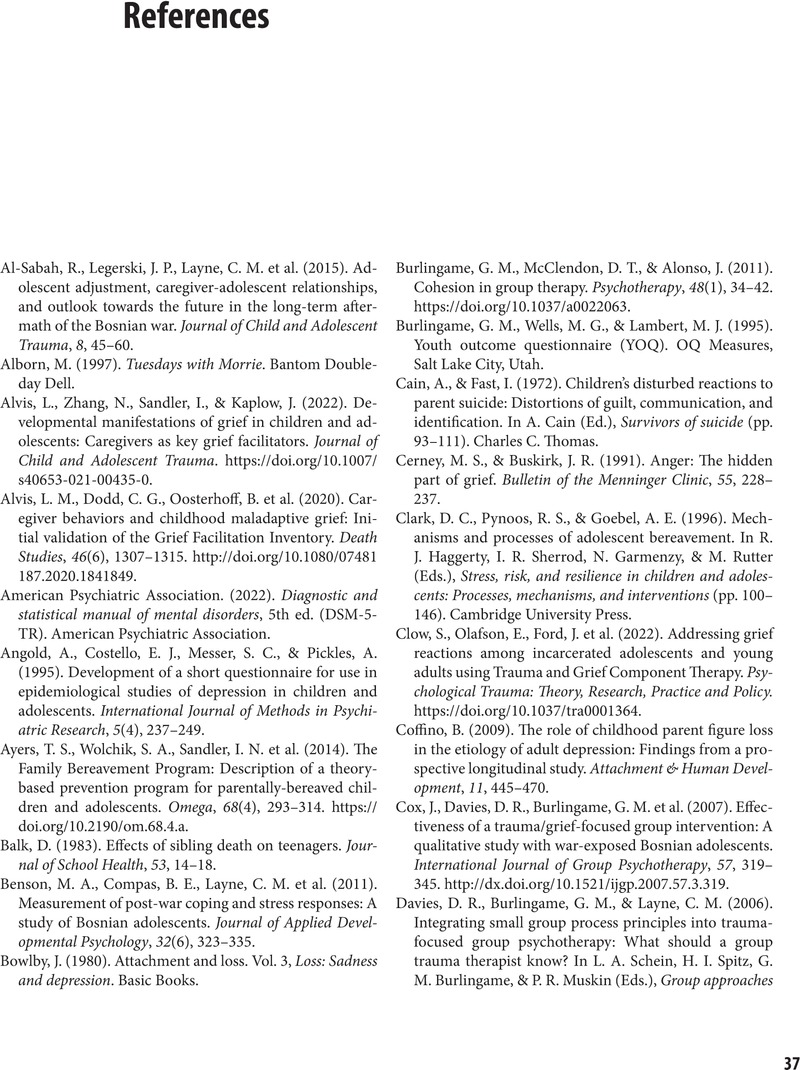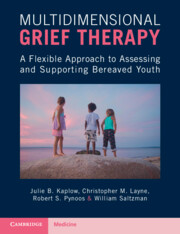Book contents
- Multidimensional Grief Therapy
- Reviews
- Multidimensional Grief Therapy
- Copyright page
- Contents
- Acknowledgments
- 1 Overview of Multidimensional Grief Therapy
- 2 Multidimensional Grief Theory
- 3 MGT Pretreatment Assessment Interview
- 4 Caregivers as “Cofacilitators” of Children‘s Grief
- References
- MGT Session
- Index
- References
References
Published online by Cambridge University Press: 08 November 2023
- Multidimensional Grief Therapy
- Reviews
- Multidimensional Grief Therapy
- Copyright page
- Contents
- Acknowledgments
- 1 Overview of Multidimensional Grief Therapy
- 2 Multidimensional Grief Theory
- 3 MGT Pretreatment Assessment Interview
- 4 Caregivers as “Cofacilitators” of Children‘s Grief
- References
- MGT Session
- Index
- References
Summary

Information
- Type
- Chapter
- Information
- Multidimensional Grief TherapyA Flexible Approach to Assessing and Supporting Bereaved Youth, pp. 37 - 42Publisher: Cambridge University PressPrint publication year: 2023
